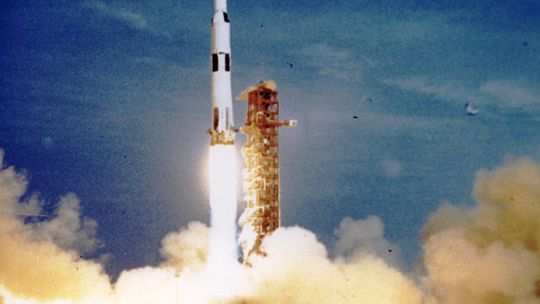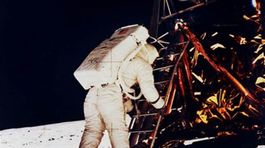The US National Aeronautics and Space Administration’s (NASA) Perseverance rover has found a rock on Mars that could bear signs of life several billion years ago. As Space.com reports, scientists on the mission team are excited but remain cautious in their excitement, as further analysis is needed to confirm their theory.
27.07.2024 18:00
Photo: NASA/JPL-Caltech/MSSS
The rock on Mars, which scientists have named Cheyava Falls, contains chemical signatures and structures that may have been formed by microbial life billions of years ago.
A rock in the shape of an arrowhead, which scientists named Cheyava Falls, contains chemical signatures and structures that may have been formed by microbial life billions of years ago, when the Red Planet was significantly wetter than it is today. Perseverance’s instruments detected organic compounds in it that are precursors to the chemical composition of life as we know it. Along the entire length of the rock, there are veins of calcium sulfate, which are mineral deposits that indicate that water, which is essential for life, once flowed through the rock. The rover also recorded dozens of millimeter-sized spots, each surrounded by a black ring. These rings contain iron and phosphate, which are also visible on Earth as a result of chemical reactions involving microbes.
On July 16, 1969, the three-member crew of the Apollo 11 mission took off from the American Cape Canaveral aboard a Saturn V rocket. It took 102 hours, 45 minutes and 42 seconds for the Eagle lunar module to land on the surface of the moon on July 20, 1969.
Cheyava Falls is located on the edge of the 400-meter-wide Neretva Vallis river valley. Scientists believe that this ancient channel was excavated long ago for water flowing into the Jezero crater. One possible scenario is that the mud, which already contained organic compounds, was poured into the valley and later cemented into the rock. A second episode of water seepage into the formed rock would have created veins of calcium sulfate and black annular spots on the object.
In order for scientists to really understand what happened billions of years ago, they need to get Cheyava Falls samples from Mars to Earth and examine them with more powerful equipment than the rover.

Returning the collected samples to Earth, however, faces many obstacles, with the cost of the effort already climbing to $11 billion. As it stands, the program requires multiple flights to Mars to get a dedicated vehicle there, and then Perseverance will either go to the vehicle and hand off the collected samples, or hand those samples to a helicopter to complete the handover. Then the exit module would carry the samples into orbit, where the spacecraft would pick them up and return them to Earth.
Source: vat.pravda.sk




